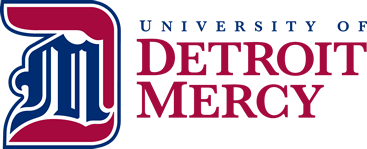听

Detroit Mercy鈥檚 School of Architecture & Community Development rebrands to highlight program, mission-driven work

Detroit Mercy's School of Architecture is now the School of Architecture & Community Development (SACD).
The purpose of the rebranding is to highlight the school’s Master of Community of Development (MCD) program as well as its mission-driven, community-based work. The change became official at the start of Detroit Mercy’s 2021-22 academic year.
The new identity is much more than a name change for Dean Dan Pitera.
“It is to really amplify who we are,” he said. “We are very unique, and it just further enhances our mission-driven, community-based approach to making architecture.”
It also allows for the MCD program to become even more of a focal point for SACD.
New Community Development-related initiatives include the Institute for AfroUrbanism, a Detroit-based research and advocacy organization established by a recent grant from The Ford Foundation; an AfroUrbanism course offered through the MCD program and additional international learning opportunities.
Collaborations with other universities are also being explored, as is a Community Development-focused institute, which would operate similarly to the Detroit Collaborative Design Center and provide students with cooperative education opportunities in community development.
For now, Community Development will remain a graduate-level program at Detroit Mercy, but students at all academic levels will benefit from its presence.
“The values and content taught in the MCD is woven throughout our undergraduate curriculum, particularly things like community engagement,” said Noah Resnick, associate dean for SACD.
A new identity for SACD has been a topic of conversation for more than a decade, Pitera said. The reasoning is simple: Illustrate that the school is much broader than just Architecture.
Before the rebrand, Detroit Mercy was in a unique position as one of the few universities whose Community Development program existed inside its Architecture school.
“You would not look to us to find a Community Development program,” Pitera said. “And with the new identity, we are the only school that has it in our name.”
 Resnick added that there is one other aspect that makes the school unique.
Resnick added that there is one other aspect that makes the school unique.
“Detroit is principally what makes us unique and uniquely positioned to have a very effective Community Development program,” Resnick said. “It’s because of the nature of this city and the way that we have been able to work in the city, not just through an academic setting but in a real-world setting to make effective change through our communities in Detroit. The expertise that our graduates gain can be applied to communities across the country, but they get a certain type of experience here that because of the direct impact they have, even while in school, I think is fairly unique, because we are in the neighborhood physically as well as academically.”
Linking Architecture and Community Development through a new identity made sense to Pitera, given how the disciplines go “hand-in-hand.”
“If the soul of a community is the person, and architecture is the objects and things within a community, then if you want to get to the soul of architecture, you need to understand the people of the community,” Pitera said. “Architecture and community are inextricably linked.”
Resnick believes the MCD program is directly connected to Detroit Mercy’s mission and Jesuit and Mercy values, especially its capstone project.
The capstone project is the creation of a comprehensive community development proposal for a real situation in a specific community that integrates human, organizational, economic and physical concerns.
“If you were to look at those capstone topics, you would see that they are all directly engaged with those types of relationships with the community,” Resnick said. “By the time they are in capstone, students are embracing that and picking projects that inherently engage the mission.”
Students may also be impacted by SACD's new identity in other ways.
“The Community Development students, what they’ll see is a firm commitment from the entire University behind their degree program,” Resnick said. “Future students are going to know that they are entering a School of Architecture & Community Development, that they’re not simply picking out from one of the 156 schools of Architecture in the country to just get an accredited degree so they can go practice. They’re going to know that the architecture they’re learning is within the context of this greater good of the community.”
.